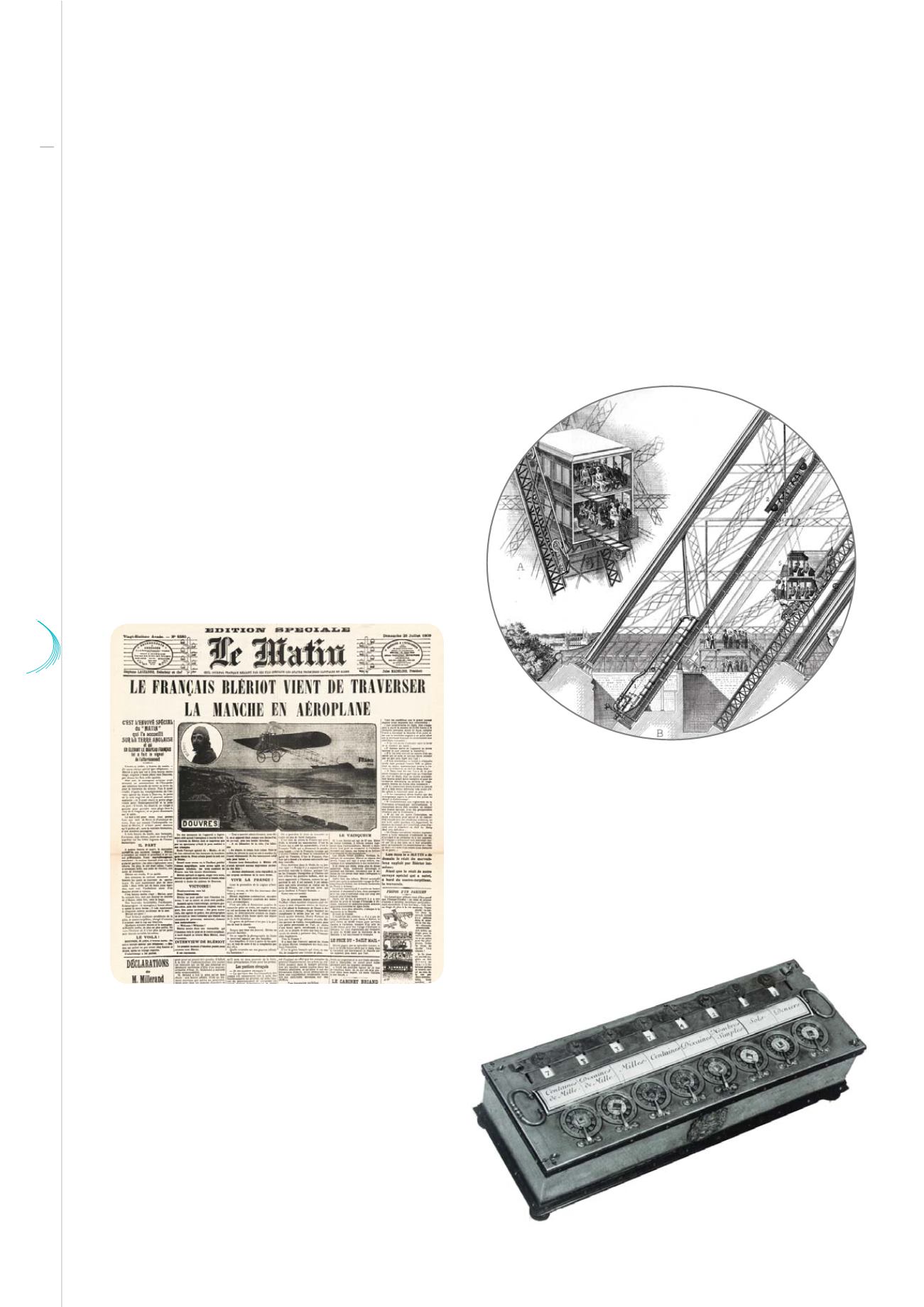

37 38
74
La Lettre
The Eiffel Tower elevator in 1889
© The Print Collector - Alamy
© John Frost Newspapers - Alamy
The Pascaline, an adding/substracting
machine invented in 1642 by Blaise
Pascal
© Granger Historical Picture Archve - Alamy
mechanics, initiated by Euler, d’Alembert and the Bernoullis, was taken over by Navier and Stokes in the
19
th
Century, who modeled viscous stress and wrote their famous equations.
Laplace and Fourier transforms were from the same period of time. Extracting fundamental information
from signals, Fourier Spectral Analysis, which was extended by Wiener in 1930, became the key
instrument for studying waves and vibrations in mechanics, acoustics and all the fields of physics. The
first Fourier analysers/synthesizers, which were mechanical and then electronic, were replaced in 1965
by the computer implementation of the Fast Fourier Transform, or FFT. It was extended more recently by
wavelet analysis, which is far more precise.
In those times, it was quite difficult to distinguish scientists inmechanics
from mathematicians, as those researchers wore both hats.
Newton and Leibniz created the differential calculus,
Cauchy holomorphic analysis and functions, Euler
and Lagrange the calculus of variations. Progress in
mechanics was brightly illustrated in 1889 by the
construction of the Eiffel Tower, a monument that
required very complex calculations, and then in
1909 when Louis Blériot made the first flight
over the Channel. His airplane and engine were
far more efficient than his competitors’, thus
demonstrating the still unfailing strength of the
French aeronautic industry.
During the whole period of time we have
just mentioned, calculation was lengthy
and tedious, performed by hand with help
of logarithmic tables, slide rules and, later
on, mechanographic machines. But there
were also older attempts to build calculating
machines, from Pascal to Babbage…


















